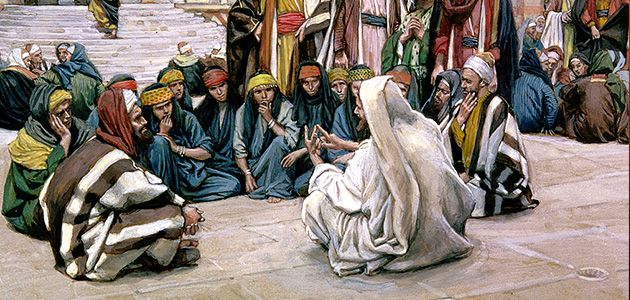10 April 2014
Was Jesus a Bum? A Hobo?
by Dr Mark Keown
On the front page of the Sunday Star Times this week (6/4/2014) is featured an article concerning a thesis by Dr Robert Myles in which he argues that Jesus was a bum or hobo (http://www.stuff.co.nz/national/9909548/Jesus-was-a-hobo-academic-claims). For this thesis, Dr Myles won the Auckland University Vice-Chancellor’s Award. Now, I haven’t had a chance to read this thesis, and in a way that should stop me commenting at all. But, I thought a few comments were appropriate.
First, even though I get annoyed that it is really only the more controversial stuff that gets in the mainstream media, it is excellent to see Jesus and biblical studies featured on the front page of a major NZ paper. This is great; people will be talking about Jesus.
Secondly, having written a doctoral thesis, I have to congratulate Dr Robert for not only completing a thesis which is difficult in itself, but winning this award. That is no mean feat. It must be a very good thesis indeed! It is great that a biblical studies thesis was considered worthy of such an accolade. It sounds like a fascinating idea which may have some real merit.
In the first place, it is true that Jesus did not really have a home to go to. He had left his family behind to become an itinerant preacher and was marginalised from them (Mark 3:20-21, 31-35). When he went home to Nazareth, he was ridiculed (Luke 4:16-30; 6:1-6). He did not do a lot in Nazareth as a result. We need to keep in mind that for the ancients, land was not owned in a western private individual way, but often in families. Not that his family were well-heeled anyway. They were apparently poor seen when they dedicated Jesus with an offering of doves (Luke 2:23-24).

His cousin John the Baptist had done the same, living it rough, wearing animal skins, eating locusts and wild honey, and living in the Judean wilderness. He certainly would have appeared as a homeless hobo (Mark 1:4-8).
Jesus too moved from place to place ducking and out of towns preaching; setting up in the countryside and ministering in fields and by lakes. He is often found praying and living out of doors. When a scribe tells Jesus he will follow him wherever he goes, Jesus responds by stating that, unlike foxes and birds which have dens and nests, he is homeless (Matt 8:19; Luke 9:58). He is effectively asking the scribe, “are you prepared to live this way too?” That’s the cost of following me. Jesus was also marginalised from the mainstream of society and identified with the poor and outcast. This was also a group he consciously identified with.
In first century Palestine, oppressed by Romans and the Jewish elite, the vast majority were struggling with poverty. It was more like a third world context than our nice comfortable living; and in an era before social welfare. Living among, and identifying with the poor in such a social context would make Jesus vulnerable to criticism for poverty was associated with accursedness (e.g. John 9:1). With his constant rebuke of those in the elite, it is not implausible that his homeless and apparently poor state would have been a factor in his demise. As such, this thesis is worth considering and reading. It perhaps touches on something that is not recognised enough.
On the other hand, Jesus had some real support. First, he had women who supported him and the others. Some from well-connected contexts like the wife of Chuza who ran Herod’s household (Luke 8:1-3). The mother of James and John, Zebedee the fisherman’s wife, was also with Jesus (Matt 20:20; 27:56). She may have used the proceeds of the family fishing business (Luke 5:1-11). Second, it appears while Jesus had no home of his own, he had a home base in Capernaum. This was likely the home of Peter (Matt 13:1, 36; 17:25; Mark 2:1; 3:20; 9:33; 10:10). Third, Jesus seems also to have had a base in Bethany outside of Jerusalem which he ducked back and forth from while in Jerusalem (Matt 21:7; Mark 11:11; Luke 10:38-42; John 11). This was likely the home of Martha, Mary, and Lazarus. Fourth, there is the place where he celebrated the Last Supper in Jerusalem suggesting Jesus had a supporter in the city (Mark 14:12-21). Jesus may have been homeless, but he was looked after.
Yet, the evidence of the Gospels is that Jesus was on the move and was viewed as a prophet. He may have had places to stay in Capernaum and other towns, but for long periods he also lived rough among the crowds as he ministered. He drew the poor to him and identified with them. So, we should not be quick to criticise Dr Myles or the Sunday Star Times. It may be that Dr Myles has overstated the case. But that’s what you do in a thesis; you push an argument and allow the wider community to consider its validity over time. This thesis may well add another interesting angle to our understanding Jesus in his social context. This is vital to understand Jesus on his terms, and not through the lens of 2000 years of western and other thought.
So, we should not be quick to be critical of this article or the Sunday Star Times. It sounds fascinating and a thesis we should grab, read, and consider. In fact it is coming out in print soon (http://www.sheffieldphoenix.com/showbook.asp?bkid=266). I say get one. I am going to.
